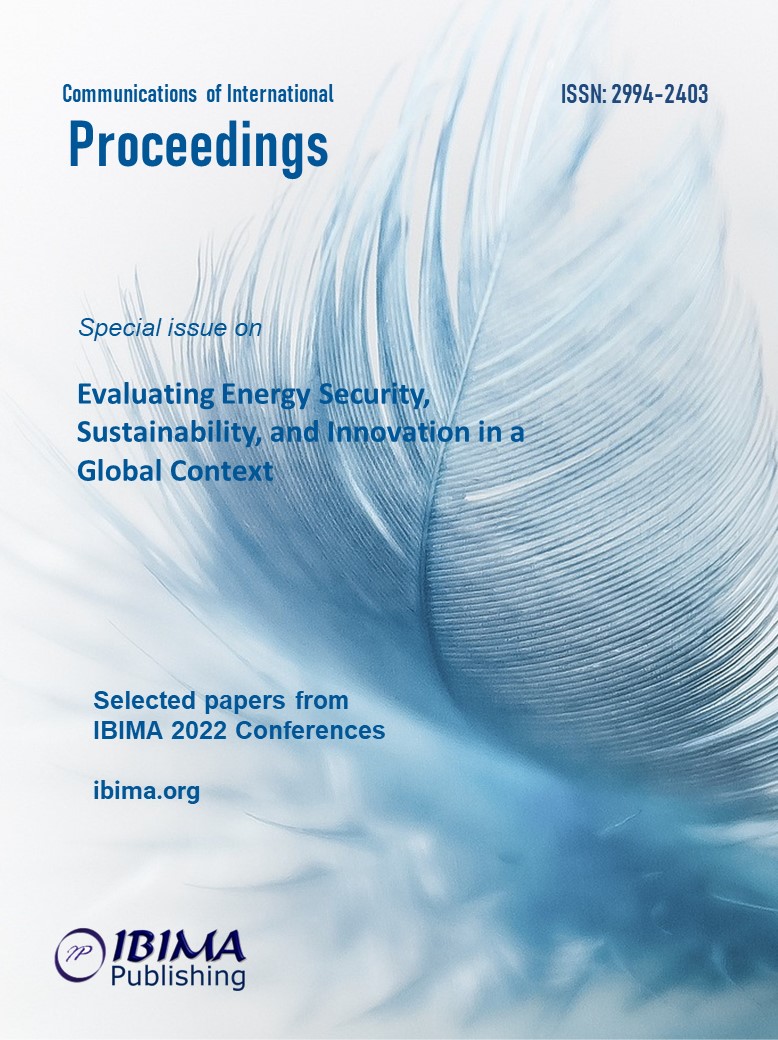
Katarzyna ŚWIERSZCZ and Bogusław JAGUSIAK
Military University of Technology in Warsaw, Warsaw, Poland

The article aims to present the scope and level of local energy security in terms of heat poverty experienced by households that use traditional heating sources, based on the example of the Polish town of Barlinek. The author will focus on the analysis of several issues, including the indicators and measures of energy security in terms of heat poverty; the scope and level of energy security in terms of heat poverty of households; the indices of heat poverty for the town Barlinek; the perception of energy security in terms of heat poverty of the residents by the Territorial Self-Government Units of the ton Barlinek and the conditions for energy security in the aspect of heat poverty as a result of research.
The conducted analysis of the problem, in the field of energy security, may be applied not only for learning purposes, but it may also enable the assessment and determine the scale and scope of the phenomenon in the context of the urgent challenge faced by individuals (households), communities, nations, and states. The research analysis should particularly contribute to: developing precise definitions of various aspects of energy poverty, including heat poverty, taking into account the diversity of the situation that is specific and adequate for Poland and including it in a national plan of energy efficiency; developing, establishing and publishing in national documents the indicators and meters of energy poverty (including heat energy) taking into account the local Polish context; understanding the nature of energy poverty (including heat poverty) that is characteristic for Polish conditions; identifying the main factors that determine energy poverty, including heat poverty; identifying and providing a precise description of the consequences of heat poverty; monitoring the phenomenon of energy and heat poverty; estimating the number of households that are affected; complying with the requirement to participate, as an EU Member State, in reducing heat poverty, to the relevant extent; developing and implementing integrated 10-year national energy and climate plans (NECP) with a long-term perspective to 2050 and long-term renovation strategies (LTRS) that improve the precision of eliminating heat poverty; introducing integrated solutions, political strategies, and estimated objectives to the national plan for the years 2030 and 2050 and defining the timeframes for its reduction; developing efficient and comprehensive tools to support counteracting the phenomenon and to help self-government administration authorities throughout the country; motivating energy service providers, power utilities and other entities to provide solutions related to financing the improvement of energy efficiency in its elimination; motivating energy service providers, power utilities, and other entities to take preventive measures by using renewable energy sources; and, finally, filing reports on the progress in the effective realisation of the objectives of the national plan to reduce heat poverty, to the Commission of the European Parliament that is responsible for the energy and environmental security of the Commonwealth.
In order to achieve the above objectives, a wide spectrum of research methods was used in the study, including theoretical, qualitative, and quantitative methods and “desk research”, i.e., an analysis of secondary sources based on the review and analysis of reports and databases and the analysis of data and information obtained from the territorial self-government units of the analysed town. The diagnostic survey (in-depth interview with the use of the PAPI (Paper and Pencil Interview) method was conducted on 1200 respondents (households) in the town of Barlinek. The survey contained 33 questions, including seven demographic questions: gender, education, employment status, number and age of household members, income, and place of residence. The remaining 26 questions referred to various aspects of the household’s life that are important in the context of the heat poverty issue. Thus, the respondents were asked about the location, characteristics, and state of repair of the inhabited property, their thermal comfort, whether they used social security services, heating costs, savings, and the quality of life. The survey consisted of various types of questions: closed-ended questions, open-ended and semi-open-ended questions, as well as single and multiple-choice questions.